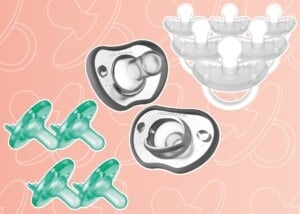Before having a baby, I was warned about the “baby blues.” It refers to the time postpartum when hormones settle and re-assert themselves after giving birth. Many moms feel a bit weepy, sad, irritable, and overwhelmed. And boy, did I feel it! I didn’t want to leave the house. I was worried about my new, tiny human being out in a big, wide world. And I was exhausted, like bone shatteringly so. But after a few days, the feelings abated. However, I was left with the exhaustion (nearly five years of exhaustion and counting!).
PMADs: What You Should Know
Baby blues has a lot to do with hormones, adjustment, and lack of sleep and will usually resolve naturally (or after some postpartum self-care and time to adjust) in a couple of weeks. 50-80% of all new mothers report feeling physically and emotionally overwhelmed.1
However, Perinatal or Postnatal Mood and Anxiety Disorders (PMADs) are not the “baby blues.” They can appear before giving birth, after birth, and persist well beyond a couple of weeks. In some cases, they can occur up to one year after giving birth. That’s right! Contrary to popular belief, PMADs don’t necessarily appear in the immediate days and weeks after birth.
What are PMADs?
PMADs encompass several conditions: depression, anxiety, obsessive-compulsive disorder, posttraumatic stress disorder, and postpartum psychosis. The most common of which are symptoms of depression and anxiety. Research suggests that between 15-21% of women experience PMAD in the year (12 months) after their child’s birth.2 The most common presentations are associated with Post/Perinatal Depression (PND) and Post/Perinatal Anxiety (PNA).
Typical symptoms of PND might include:
- Feeling anger or irritability
- Trouble falling or staying asleep
- Sleeping too much
- Feeling guilty or worthless
- Lack of interest in doing things you used to enjoy
- Having difficulty concentrating
- Socially isolating yourself from family or friends
- Not caring for yourself (activities of daily living like washing yourself or getting dressed)
- Over or under-eating
- Feeling weepy or crying often
- Showing too much or not enough concern for your child
- Having negative feelings about your baby
- Feeling like harming yourself or the baby (if you experience these thoughts, please seek immediate help from a trained professional or emergency services in your area)3
Typical symptoms of PNA might be:
- Constant worry
- Feeling that something bad is going to happen
- Racing and intrusive thoughts
- Trouble falling asleep or sleeping too much
- Loss of appetite or overeating (weight loss or gain)
- Restlessness or inability to sit still
- Physical symptoms like dizziness, nausea, headaches, racing heartbeat, and breathing fast
- Feeling fearful or uneasy1,3,4
Many of these symptoms are normal. If your child becomes a non-sleeping, breastfeeding machine at night, of course, you will feel tired. Due to hormones and significant adjustments to your life, many of these other feelings can be very typical. But you should pay attention when these symptoms last (consistently) for more than a couple of weeks, become more severe, or start to affect the quality of your life.
Who gets PMADs?
Little is known about why mental health conditions impact one person but not another. It is thought to be a combination of genetics, biology, and personal history/experiences. Some specific life circumstances that occur before and during pregnancy that are associated with a higher likelihood of PMADs are:
- A history of mental health conditions
- Substance use (alcohol and other drugs)
- Trauma or violence
- Lack of social support
- A traumatic birth or significant medical intervention post-birth1,3
While these factors might increase the likelihood of experiencing PMADs, remember to watch for the symptoms rather than assuming you or someone you know isn’t likely to get a PMAD. They can occur in women having their first child or even their fourth, fifth, etc. Women with no medical interventions can experience them, and mothers whose babies had to be in the NICU or required medical support themselves. In recent research, it is also being discovered that fathers can experience PMADs too.1
Seek help as soon as you can.
There seem to be a lot of unrealistic expectations around motherhood that it will be a fluffy, rosy, beautiful experience with a snuggly, perfect baby (social media has a fair bit to answer for here). But motherhood certainly isn’t perfect. I have yet to meet a perfect parent. But it’s these expectations that can make it hard to seek help.
You may feel like everyone else has it together or that a “good parent” would handle things better. But mental health conditions don’t discriminate. They don’t care how beautiful your nursery is or how closely you stuck to your birth plan. Being a parent is messy, challenging, and the most beautiful thing we will ever do. But if you are struggling, it’s essential to seek support if you (or someone you love) are experiencing any of these symptoms. Seeking help is a sign of strength, not weakness.
If this article has brought up anything for you, please seek the support of a trusted health professional or emergency services in your area.













